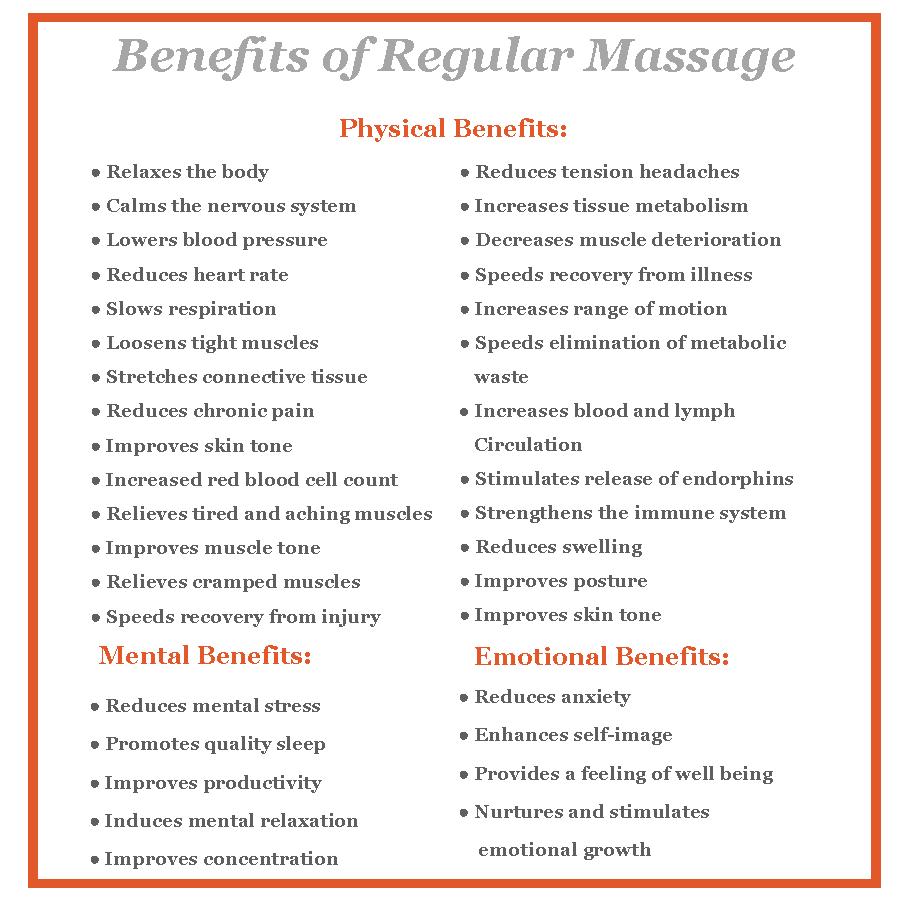In this article, we’ll discuss how often you should get a massage. We understand the importance of this topic and as a blog run by massage therapists and enthusiasts, we aim to share valuable insights and help fellow massage fans. So, if you’re wondering about the ideal frequency for indulging in a massage, you’re in the right place to find out. Stay tuned to learn more!
How Often Should You Get A Massage?
As massage therapists and massage enthusiasts, we understand the importance of finding a balance between self-care and the demands of everyday life. Whether you’re someone who enjoys the occasional pampering or someone who relies on massage therapy for physical relief, it’s important to know how often you should get a massage to maximize its benefits.
Factors to Consider
When it comes to determining the frequency of massage therapy, there are several factors to consider, including your physical health, mental health, stress levels, and budget and time constraints.
Physical Health
Your overall physical health can play a role in how often you should get a massage. If you’re in good physical shape and don’t have any existing medical conditions, you may only need a massage for maintenance and relaxation purposes. However, if you have chronic conditions or are recovering from an injury, more frequent massage sessions might be necessary.
Mental Health
Massage therapy can have a positive impact on your mental well-being. If you’re experiencing high levels of stress, anxiety, or depression, regular massages can help alleviate these symptoms. It’s important to consider your mental health when determining the frequency of your massage sessions.
Stress Levels
Stress is a common part of daily life, and finding healthy ways to manage it is essential. If you’re constantly under high levels of stress, scheduling regular massage sessions can be beneficial in reducing stress and promoting relaxation. Consider your stress levels when deciding how often to get a massage.
Budget and Time Constraints
While massage therapy can be a valuable investment in your well-being, it’s important to consider your budget and time constraints. Determine what you can comfortably afford and schedule sessions accordingly. It’s better to have regular, consistent massages at a frequency that fits your financial and time limitations rather than sporadic, infrequent sessions.

This image is property of phoenixlakemassage.com.
General Recommendations
Though everyone’s needs and circumstances are different, there are some general recommendations for how often you should get a massage based on different purposes and goals:
Wellness and Maintenance
For overall wellness and maintenance, one massage session per month is often sufficient. This frequency allows you to reap the benefits of regular massage therapy without overwhelming your schedule or budget. It can help you relax, reduce muscle tension, and promote overall well-being.
Injury Recovery
If you’re recovering from an injury, the frequency of massage therapy may need to increase. Consult with your healthcare provider or a licensed massage therapist to determine the appropriate frequency for your specific condition. In some cases, multiple sessions per week may be necessary initially, and then gradually tapering off as you heal.
Chronic Conditions
For individuals with chronic conditions such as arthritis or fibromyalgia, regular massage therapy can provide much-needed relief. Depending on the severity of your condition, weekly or bi-weekly sessions may be recommended to manage symptoms and improve your quality of life.
Prevention and Precautionary Measures
If you want to prevent muscle injuries or address potential imbalances before they become problematic, incorporating regular massage therapy into your routine can be beneficial. Monthly or bi-monthly massages can help identify and address any underlying issues, keeping your body in optimal condition.

This image is property of post.healthline.com.
Individual Needs
Consider your individual needs when deciding how often to get a massage. Everyone’s body is unique, and what works for one person may not work for another. Factors to consider include personal preferences, specific conditions or injuries, and your current lifestyle and activities.
Personal Preferences
Some individuals simply enjoy the relaxation and rejuvenation that comes with regular massages. If this is the case for you, consider incorporating monthly or bi-monthly massages into your self-care routine.
Specific Conditions or Injuries
If you have specific conditions or injuries, working with a licensed massage therapist to develop a personalized treatment plan is essential. They can assess your needs and recommend the appropriate frequency of massage therapy to address your specific situation.
Current Lifestyle and Activities
Consider your current lifestyle and activities when determining how often to get a massage. Are you an athlete or someone who engages in regular physical activity? If so, more frequent massages may be necessary to address the wear and tear on your muscles. Alternatively, if you have a sedentary lifestyle, you may only need massages for maintenance and relaxation purposes.

This image is property of i0.wp.com.
Physical Activities
Your level of physical activity can influence how often you should get a massage. Whether you lead an active lifestyle or have a more sedentary routine, it’s important to tailor your massage frequency accordingly.
Athletes and Active Individuals
If you’re an athlete or someone who participates in regular exercise, your muscles may experience more strain and tension. In these cases, weekly or bi-weekly massages can help relieve muscle soreness, improve flexibility, and aid in recovery.
Sedentary Lifestyles
If you have a sedentary lifestyle, where you spend most of your day sitting, regular massages can be beneficial in relieving muscle tension and improving circulation. Monthly or bi-monthly massages are often sufficient for individuals with sedentary jobs or routines.
Exercise Intensity and Frequency
The intensity and frequency of your workouts should also be taken into consideration when determining how often to get a massage. If you engage in vigorous exercise multiple times a week, more frequent massages may be necessary to help prevent injuries and aid in recovery.

This image is property of images.squarespace-cdn.com.
Muscle Aches and Pain
Whether you’re dealing with mild discomfort or chronic pain, massage therapy can be an effective tool in alleviating muscle aches and pain. The frequency of your massage sessions will depend on the severity and nature of your pain.
Mild Discomfort or Tension
If you’re experiencing mild muscle discomfort or tension, monthly or bi-monthly massages can help alleviate these symptoms. Regular sessions can help relax tight muscles, improve circulation, and provide temporary relief.
Chronic or Severe Pain
Individuals with chronic or severe pain may require more frequent massage therapy. Consult with your healthcare provider or a licensed massage therapist to determine the appropriate frequency for managing your pain. Multiple sessions per week or bi-weekly sessions may be necessary to provide relief and improve your quality of life.
Localized or Generalized Pain
Consider the location and nature of your pain when determining how often to get a massage. If you have localized pain in a specific area, more frequent massages focused on that area may be beneficial. On the other hand, if you have generalized pain throughout your body, full-body massages at a frequency that fits your needs may be more suitable.

This image is property of kirstinzullo.com.
Conclusion
When it comes to deciding how often you should get a massage, it’s important to find a balance that works for you. Consider your physical health, mental health, stress levels, and budget and time constraints. Listen to your body and pay attention to its needs.
If you’re unsure about the appropriate frequency of massage therapy for your specific situation, it’s always best to consult with a licensed massage therapist. They can assess your needs and provide personalized recommendations to help you achieve the maximum benefits from your massage sessions.
Remember, self-care is essential, and incorporating regular massage therapy into your routine can be a valuable investment in your overall well-being. Find a frequency that suits your needs and enjoy the many benefits that massage therapy has to offer.
